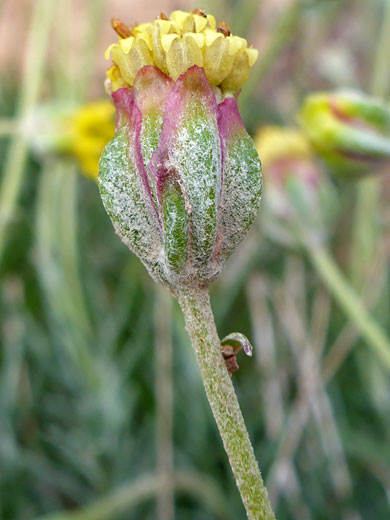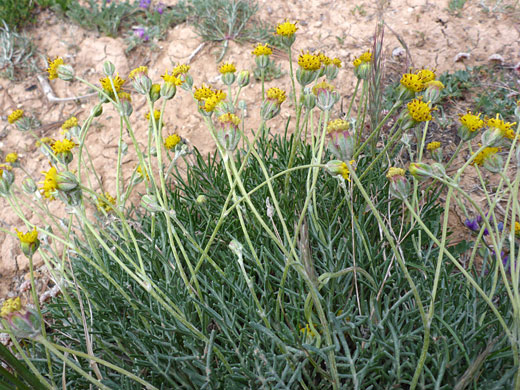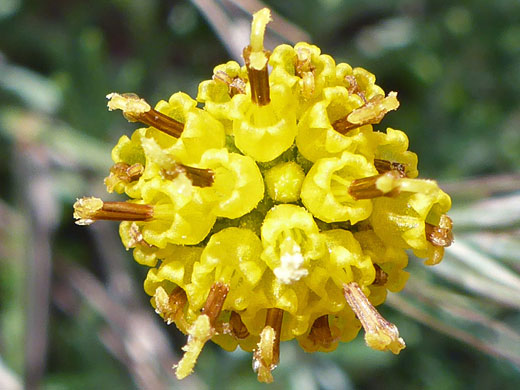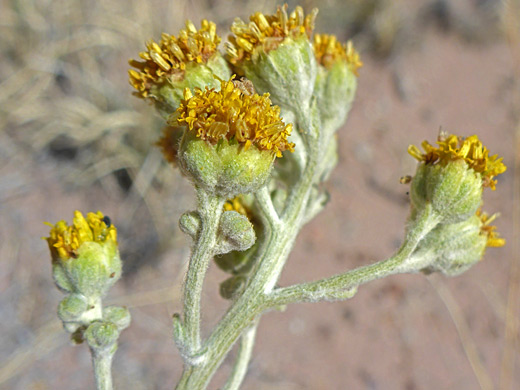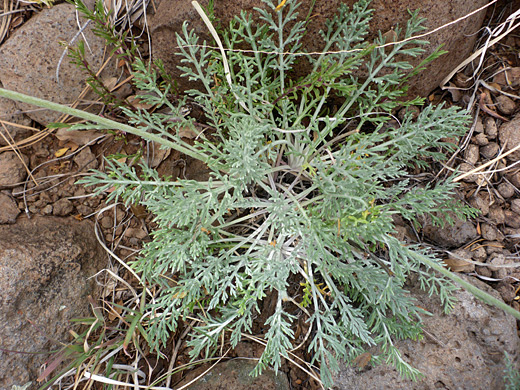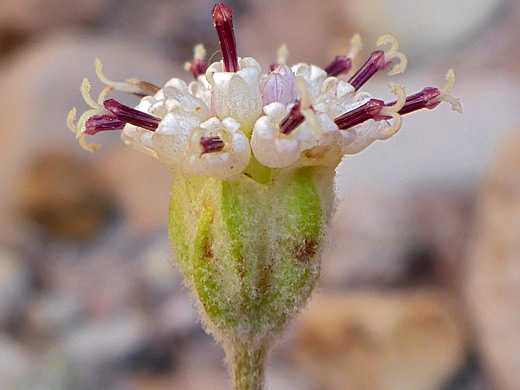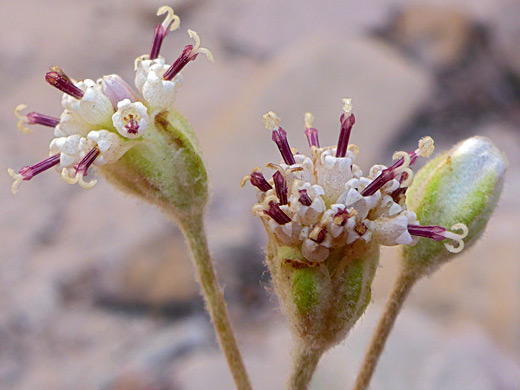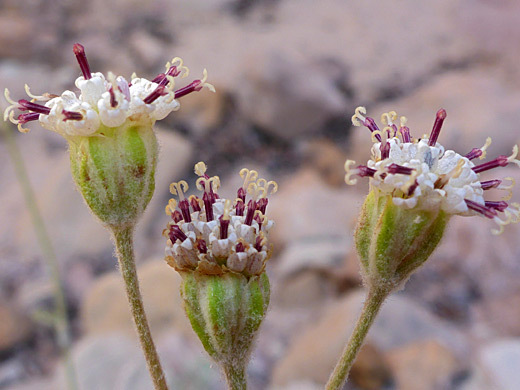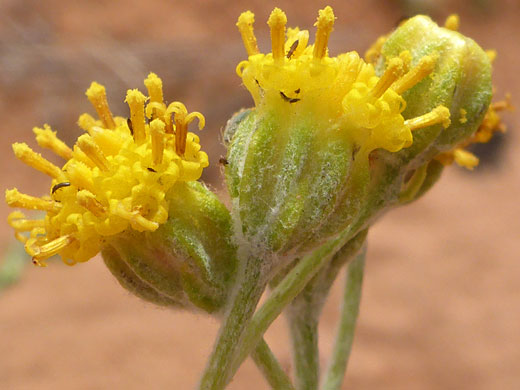Hymenopappus Filifolius, Fineleaf Hymenopappus
Plants > Wildflowers > Asteraceae > Hymenopappus Filifolius

Hairy stem and phyllaries - hymenopappus filifolius along the Scheurman Mountain Trail, Sedona, Arizona
Common names:
Fineleaf hymenopappus, threadleaf sunflower
Family:
Scientific name:
Hymenopappus filifolius
Main flower color:
Range:
All the western states
Height:
Up to 40 inches
Habitat:
Sandy and gravelly locations in various environments; 300 to 11,500 feet
Leaves:
Up to 7 inches long; pinnately divided into narrow, linear lobes up to 2 inches long; at the base and along the stem
Season:
April to September
Hymenopappus filifolius is one of many asteraceae species that have only disc florets, no rays. Plants are found in all the Western states, concentrated in the Rocky Mountains, the Great Basin and the southern deserts; the diversity of habitats and locations results in wide a range of characteristics, and 13 varieties have been identified, differing in such aspects as hairiness of basal leaves, number of stem leaves, and dimensions of the various flower parts.
Plants are perennials, up to three feet tall, with leaves clustered around the base and at opposite intervals along the stems. Basal leaves are twice divided into linear, thread-like lobes, while stem leaves are less divided, and number between 0 and 12. Stems may be toped by a single flowerhead, or clusters of up to 60. Leaves, stems and phyllaries are usually covered by white tomentose hairs. Flowerheads contain between 10 and 80 disc florets, usually yellow, occasionally white. Phyllaries are green, often reddish along the upper margins.
Plants are perennials, up to three feet tall, with leaves clustered around the base and at opposite intervals along the stems. Basal leaves are twice divided into linear, thread-like lobes, while stem leaves are less divided, and number between 0 and 12. Stems may be toped by a single flowerhead, or clusters of up to 60. Leaves, stems and phyllaries are usually covered by white tomentose hairs. Flowerheads contain between 10 and 80 disc florets, usually yellow, occasionally white. Phyllaries are green, often reddish along the upper margins.
All Contents © Copyright The American Southwest | Comments and Questions | Contribute | Site Map




